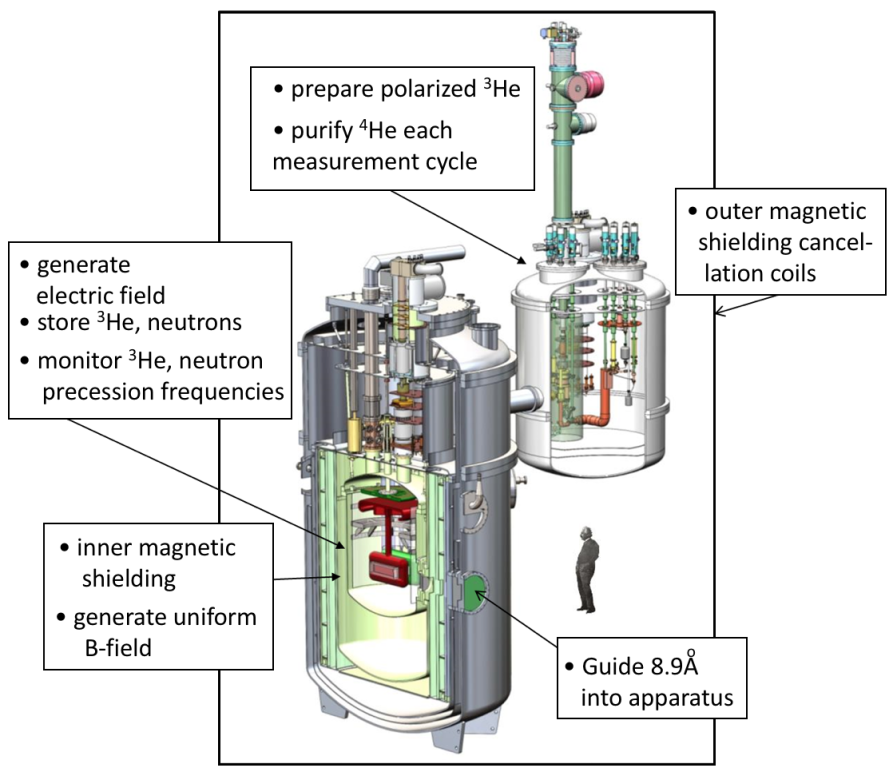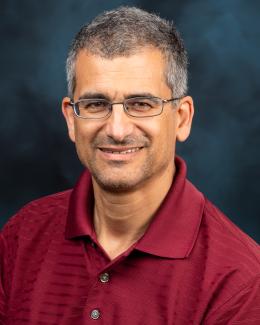Project Details

Click to view full project site: https://nedm.ornl.gov/
It turns out that the "roundness" of the neutron charge distribution (measured by the electric dipole moment) is connected at a deep level to a rather fundamental question - "Why is there any matter in the Universe?" Matter and anti-matter were created in equal amounts during the Big Bang. Most (all but one part in a billion) was annihilated in subsequent matter/anti-matter collisions. Clearly (and thankfully) a small excess of matter survived to form our Universe. Theories that purport to explain this invariably predict that the neutron is not quite perfectly round.
The neutron electric dipole moment was first measured in 1950 by Smith, Purcell, and Ramsey at the Oak Ridge Reactor - the first intense neutron source. This first measurement showed that the neutron was very nearly round (to better than one part in a million). In the last sixty years the precision of the measurement has improved by more than six orders of magnitude; the neutron is known to be round to better than one part in a trillion.
The goal of the nEDM experiment at the Fundamental Neutron Physics Beamline at ORNL’s Spallation Neutron Source is to further improve the precision of this measurement by another factor of 100.
The statistical sensitivity (sigma) of an EDM experiment depends on the electric field, the number of neutrons stored in the field, and the neutron storage time. The nEDM experiment at the Spallation Neutron Source takes advantage of an amazing confluence of superfluid helium properties to substantially increase E, N, and tau, and thereby enable a very high precision EDM determination. The measurement will utilize a large density of ultracold neutrons (UCNs) that will be produced through a superthermal process involving scattering off of excitations in superfluid Helium. The UCNs will be stored in a material bottle in strong electrical fields for times longer than their decay lifetime.
The collaboration completed an advanced R&D period, having demonstrated a myriad of techniques required to carry off the experiment (e.g., electric fields exceeding 85 kV/cm in superfluid helium with electrodes manufactured from an acrylic substrate; efficient collection of 80 nm EUV light; magnetic field gradients < few ppm/cm; neutron storage times exceeding 1,800 seconds; fabrication of cryogenic, non-conducting neutron vacuum windows; etc.



